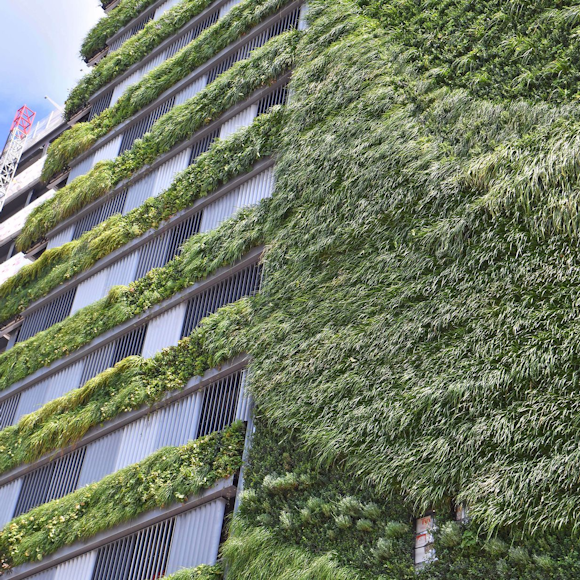Today, living wall systems are often seen as a modern-day trend, but the truth is, they’ve been around for much longer.
In fact, the very first implementation of a living wall structure can be traced back to 1938, where a Professor of Landscape Architecture at the University of Illinois, known as Stanley Hart White, patented a “Vegetation-bearing Architectonic Structure and System”.
However, White’s invention failed to progress beyond a few prototypes, which led a French botanist named Patrick Blanc, alongside architect Adrien Fainsilber and engineer Peter Rice to implement the very first successful indoor living wall at the Cite des Sciences et de l’Industrie in Paris, 1986.
Since then, living wall systems have seen a huge rise in popularity and can be found all around the world -but why is this the case? Read on as we explore the purpose of living walls through the environmental, commercial, and health-related benefits they offer today.
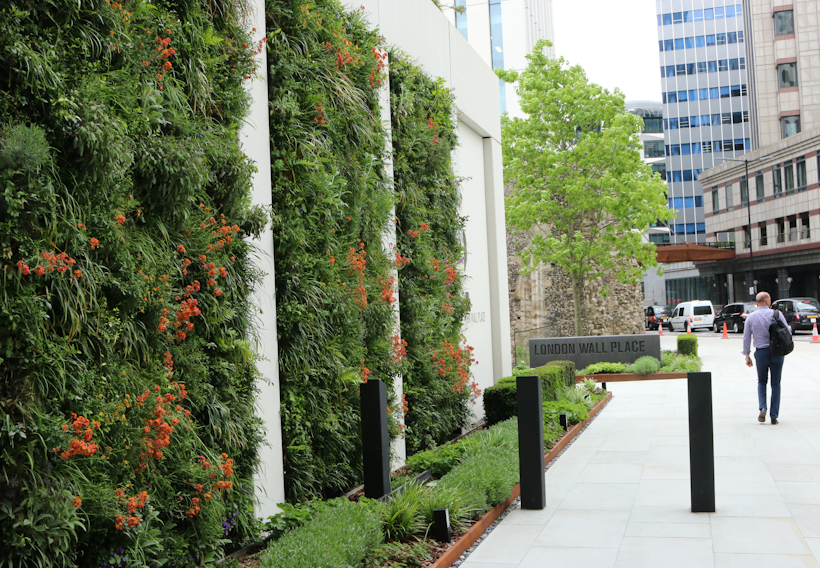
Environmental benefits of living wall systems
1. Living walls reduce ambient temperature
Plants absorb around 50% of the sunlight that reaches them and reflect only 30%. This helps to create a cooler and more pleasant climate during the hot days of summer. But how exactly does this benefit the environment?
Well, when you look at indoor climates, this means that around 33% less air conditioning is required. Therefore, having a living wall installed means less energy used, which positively impacts your carbon footprint.
2. Living walls decrease air pollution in cities
Air pollution is a lethal combination of particulate matter (mostly soot and dust) as well as gases such as nitrogen dioxide (NO2), ozone (O3), sulphur dioxide (SO2) and carbon monoxide (CO).
Exhaust fumes from cars, bikes, and other vehicles are a major contributor this air pollution in cities - especially where large buildings line either side of the street. This creates what is known as ‘street canyons’ which trap pollution at street level.
Research shows that introducing living walls and other green infrastructure can reduce the concentration of pollutants in street canyons by as much as 60% for particulate matter and 40% for NO2.
3. Living walls help combat the urban heat island effect
In cities, a vast amount of concrete and tar are used to build roads and other structures which absorb and trap heat. This results in built-up areas holding heat for longer, making cities hotter than the surrounding countryside with more vegetation and greenspace. This is known as the urban heat island effect and for larger cities, the difference can be as much as 5°.
Living walls mimic the vegetation coverage that the countryside naturally benefits from, helping to shade and cool buildings from the sun. This means that buildings with living walls absorb less heat and contribute less to the local urban heat island effect.
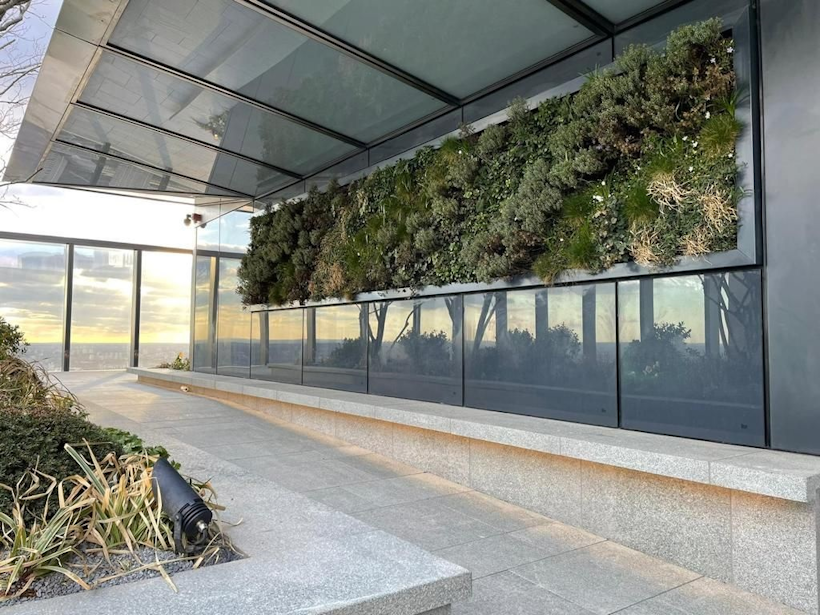
Commercial benefits of living wall systems
Not only are living walls easy on the eye and environmentally friendly, but with commercial benefits, make a fantastic case for businesses to consider too:
1. Living walls demonstrate a brands commitment to sustainability
Living wall systems are an excellent way to visually demonstrate to customers, the public, and employees of your brand’s commitment to the environment.
Think about, the number of people that will see and benefit from a living wall on your premises will always outweigh those that view your Corporate Social Responsibility (CSR) report.
But don’t just take our word for it. UK retailer Marks and Spencer (M&S) has been installing living walls to both new and existing stores over the past decade – and our team at Viritopia are extremely proud to have been involved. Check out our most recent work for M&S.
2. Living walls boost productivity
A greener workspace is generally more inspiring, so include plenty of plants for a healthier indoor climate. Living walls help bring a positive mood to a workspace, which enhances learning and efficient decision making on complex tasks. As a matter of fact, a green workspace can result in a 15% increase in productivity.
3. Living walls help cut heating bills
Buildings lose temperature through their walls and roof during the winter, which is why we use heating to keep warm. According to the London Living Roof and Walls Technical Report in 2008, the shade provided by exterior living walls can reduce temperature fluctuations at the wall surface.
As well, living walls create a zone of still air adjacent to the wall, which can reduce convection at the surface by up to 75% and heating demand by up to 25%.
Because of this, less heating is required in the winter which positively effects the environment, and those paying electricity bills.
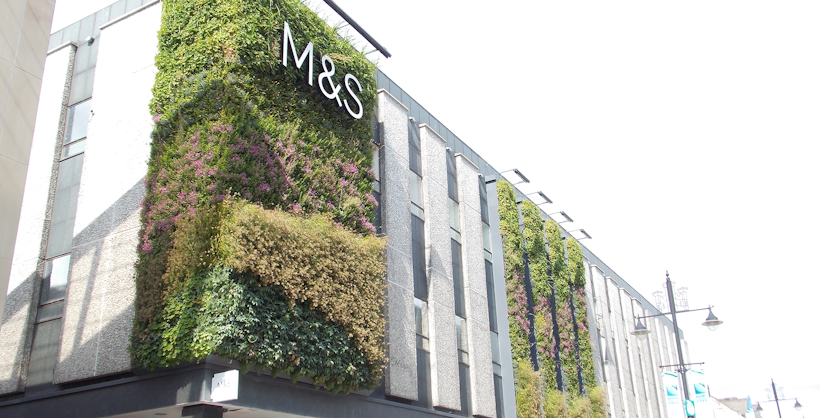
Health-related benefits of living wall systems
1. Living walls purify the air
According to the World Health Organisation, 9 out of 10 people breathe air that exceeds WHO guideline limits containing high levels of pollutants. In fact, air pollution kills a staggering 4.2 million people each year.
Although living wall systems can’t tackle this issue alone, they, alongside other sustainable architecture can certainly make a difference. Here’s how.
Plants are known to filter out gaseous containments, which helps reduce atmospheric pollutants. So, the bigger the living wall. the more air it will purify -and some living walls reach up to thousands of meters in size. Take a look at a recent project of ours that covered over 2000m2.
2. Living walls increase the feeling of well-being
This benefit is a direct consequence from the above. Cleaner air leads to fewer health complaints such as headaches and respiratory irritation. So, in a working environment with plenty of greenery, there’s a noticeable decrease in the absence of employees due to illness.
3. Living walls help to reduce stress
Living and working in a green environment has a positive effect on the well-being of people. Living walls are known to reduce stress and stimulate our bodies into a more relaxed feeling. Blood pressure, heart activity, muscle tension, and brain activity can all be improved by viewing plants for just a few minutes.
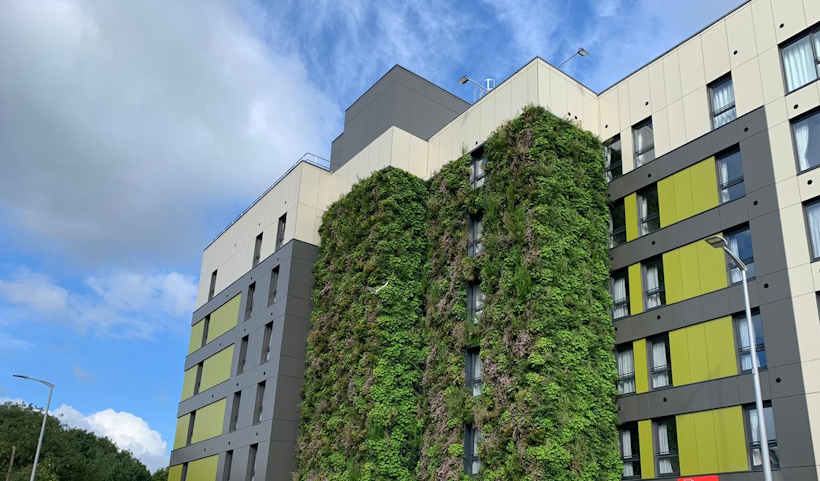
Living wall systems from Viritopia
Here at Viritopia, we provide all types of buildings with integrated living wall systems that have been carefully designed, installed, and maintained over the past 13 years. Whether you’re looking to improve the air quality of your space, or like the idea of bringing nature into your workspace, contact our team today – we’re always happy to talk and would love to discuss your requirements.
_luhji.jpeg?w=4000&q=90&auto=format&fit=crop&crop=edges,focalpoint&fm=png)
